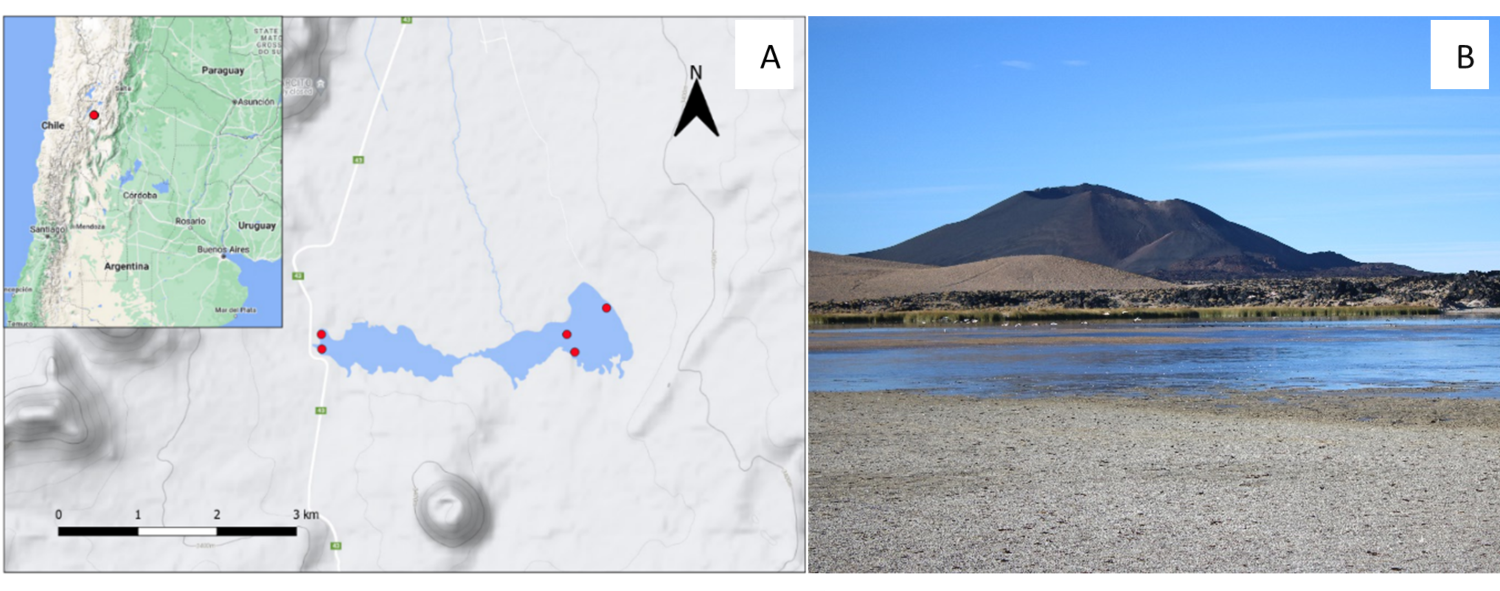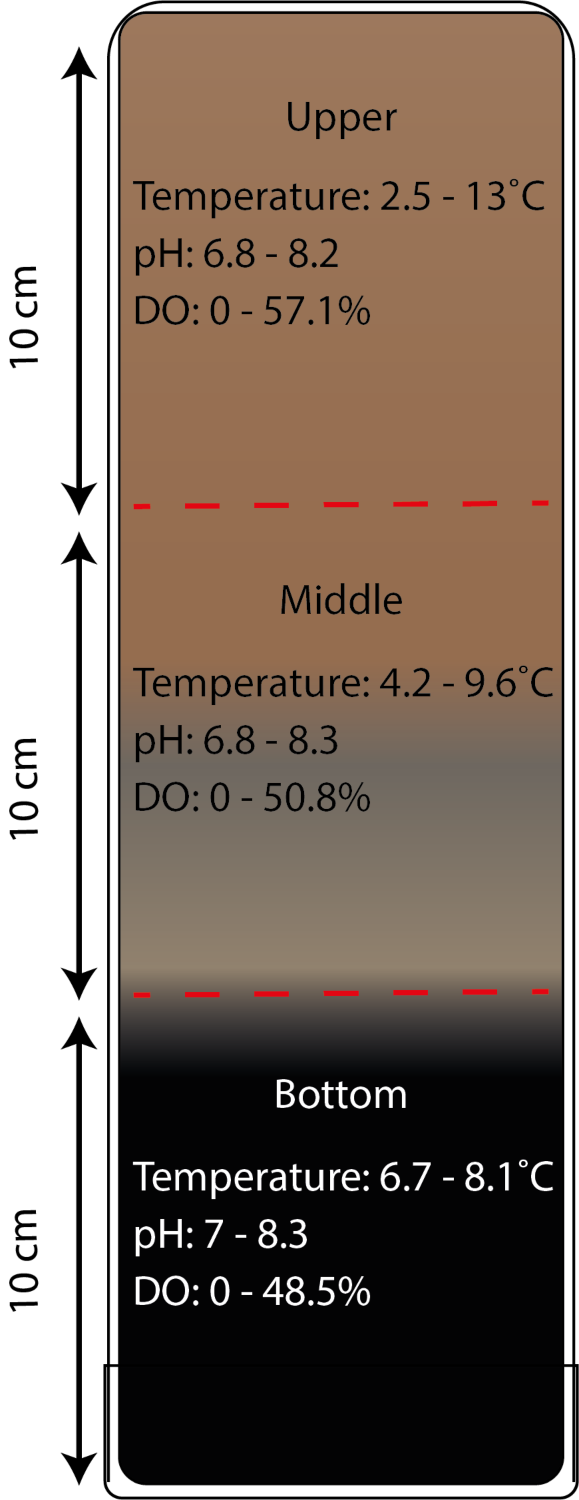Scratching beneath the surface of a Mars analogue site: Microbial stratification in Laguna de Alumbrea
- 1The Open University, AstrobiologyOU, School of Environment, Earth and Ecosystem Sciences, United Kingdom of Great Britain – England, Scotland, Wales (ben.tatton@open.ac.uk)
- 2CICTERRA-Centro de Investigaciones en Ciencias de la Tierra, CONICET-UNC, Córdoba, Argentina
Abstract: This work describes a new high-altitude Mars analogue site and the stratification of microbial communities with depth within lake sediments. Understanding how microbial communities at this site change with depth may give insights into the type of metabolism that may have dominated paleolake environments on early Mars and the resulting biosignatures.
Introduction: High-Altitude Andean lakes (HAALs) are poly-extreme environments which mimic many of the physiochemical conditions present on Mars during the Noachian (4.1 – 3.7 Gya) and Hesperian Mars (3.7 – 3.0 Gya)1,2. This combination of physiochemical conditions has led to HAALs being identified as natural laboratories for studying life under conditions analogous to early Earth and early Mars1,3. Present-day Mars is a cold, hyper-arid planet with surface conditions incapable of supporting liquid water in most locations. However, orbiter, rover, and lander missions have uncovered extensive hydrated mineral deposits and widespread geomorphological evidence of long-lasting fluvial and lacustrine environments, which dried up in the Hesperian4. Following the collapse of the martian magnetosphere, conditions on the surface would have become increasingly inclement. However, lake sediments may have offered refuge against desiccation, intense ultra-violet radiation (UV), large diurnal temperature fluctuations, and reduced atmospheric pressures with biosignatures potentially being preserved following lithificaytion5. For this reason, the study of analogue environments and the nascent microbiome is crucial in informing targets for biosignature detection. Despite their relevance to early Hesperian Mars, the lakes of the Argentinian Puna (a plateau between 3000 – 6000 m) remain understudied6. Here we present the geochemistry and microbial communities associated with the lake water and sediments from the previously undescribed Laguna de Antofagasta (LDA; Catamarca, Argentina, -26.111148, -67.407338) were analysed. We demonstrated that these communities change with depth, which will aid in identifying relevant metabolisms and biosignatures to inform current and future life-detection missions.
Methods: Lake water and cores (5 x 30 cm) were collected from five sample points located around the perimeter of LDA in April 2022 (Figure 1). For each microbial core, a sister core was collected for geochemical analyses (pH, temperature, and dissolved oxygen (DO) readings) to avoid contamination of microbial cores. Each core was divided evenly into an upper, middle, and bottom section before being stored under anaerobic conditions. The lake water samples were collected and filtered using 0.22 µm Sterivex filters, and all samples were transported to The Open University, UK at 4˚C. Pore and lake water were analysed using ICP-OES and IC analysis to collect bulk chemical and ionic concentrations. DNA was extracted using the XS buffer method7, and 16S rRNA gene sequencing was performed to characterise the microbial communities. In addition, Postgate B media was used during culture-dependent analysis to isolate sulphate-reducing bacteria (SRB).

Figure 1: Laguna de Antofagasta (LDA) is situated in the Argentinian Puna in the Andes (A). LDA sits at the base of the Volcán La Alumbrera lava field, Antofagasta volcanic field, Catamarca, Argentina (Image B). Image credit: Gerardo Antonio Stoppiello.
Results: There were clear differences in physicochemical conditions as well as microbial communities between the sites. Depth correlated with temperature stability, e.g., the upper sections 0-10 cm (n=5) ranged from 2.5 – 13.0 and the bottom 20-30 cm (n=5) fluctuated between 6. 7 and 8.3˚C. pH ranged from 6.8 to 8.3 but appeared to be stable across the depth profiles (Figure 2). Microbial communities also shifted with depth; genera associated with sulfate-reduction became dominant in the bottom sections. Subsequent culture-independent analysis successfully enriched for sulfate-reducing microorganisms. Canonical Correspondence Analysis (CCA) indicated that dissolved oxygen levels, location, and pH had the greatest impact on microbial community composition.

Figure 2: Cores were separated into sections before and data were collected on temperature, pH and DO.
Implications: In line with previous works6,8,9, the results from this study highlight sulfate reduction as a key metabolism within HAALs and Mars analogue environments. This is significant as biosignatures, and their preservation may be influenced by depth. This work also highlights that physical conditions in the shallow subsurface remain stable, avoiding many of the challenges presented to life by extreme UV, desiccation, and diurnal temperature fluctuation.
Future work: To identify how microbial communities may have stratified in martian paleolakes, simulation experiments will be performed. To replicate geochemical conditions, a novel simulant will be used in a column and microbial community structure will be monitored across depth and time.
References
[1] Cabrol et al. Geophys Res Biogeosciences. 2009;114(4):1–20.
[2] Farías et al. J Geophys Res Biogeosciences. 2009;114(G2):0–04.
[3] Mlewski et al. Front Microbiol. 2018;9(MAY):996.
[4] Carr & Head JW. Earth Planet Sci Lett. 2010;294(3–4):185–203.
[5] Grotzinger et al. Science (80- ). 2014;343(6169).
[6] Gomez et al. PALAIOS. 2014;29(5):233–49.
[7] Tillett & Neilan. J Phycol. 2000;36(1):251–8.
[8] Nixon et al. Astron Geophys. 2013;54(1):13–6.
[9] Westall et al. Astrobiology. 2015;15(11):998–1029.
How to cite: Tatton, B., Macey, M. C., Gomez, F., Schwenzer, S. P., Toubes-Rodrigo, M., and Olsson-Francis, K.: Scratching beneath the surface of a Mars analogue site: Microbial stratification in Laguna de Alumbrea, Europlanet Science Congress 2022, Granada, Spain, 18–23 Sep 2022, EPSC2022-1152, https://doi.org/10.5194/epsc2022-1152, 2022.

